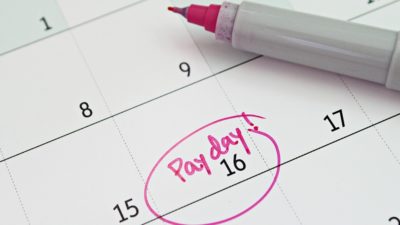Saving for retirement has never been easy. In the days when private and public sector employers offered generous defined benefit (DB) pensions, that didn’t matter as much. But today, with private sector DB pensions all but extinct, you really have to save if you want to retire comfortably.
If you’re a government worker with a very generous pension plan, then perhaps that doesn’t apply to you. But if you’re like most Canadians, you’re really going to need some savings to retire. According to most experts, the average Canadian needs about $750,000 to retire today.
If you still have a ways to go before you retire, you’ll need more than that, because inflation reduces the purchasing power of a dollar. In this article, I’ll reveal three ugly truths about retirement in Canada–and what you can do to manage them.
CPP and OAS don’t even cover rent in Toronto
It’s well known that CPP and OAS don’t cover most retirees’ living expenses. According to Wealthsimple, the two benefits combined pay $1,608 a month on average. If you’re on the low end of CPP, you might only get $1,240 combined. You don’t need me to tell you that $1,240 won’t cover your cost of living. What may surprise you is the fact that these amounts don’t even cover rent in Toronto anymore. According to rentals.ca, the average rent in Toronto among all property types was $2,021 in June 2020. CPP and OAS won’t even cover that on a pre-tax basis!
OAS can be clawed back easily
Another big problem with CPP and OAS is that OAS can easily be clawed back. If you earn over $79,845 your OAS starts getting clawed back. If you earn over $129,581, the benefit is clawed back to zero. The theory behind these clawbacks is that higher-earning retirees don’t need the money. That makes sense in theory. But if you’re retired, earning $80,000, and severely in debt, it might not seem as fair as the government thinks it is.
Most Canadians don’t have enough saved for retirement
A final ugly truth about retirement in Canada is that most Canadians near retirement age don’t have enough money saved to retire. According to BMO, the average RRSP balance is just $112,295. That’s a far cry from the $750,000 that financial planners say is needed to retire. Granted, the amount is higher for older Canadians, and this isn’t factoring in Tax-Free Savings Accounts (TFSAs) and home equity. But even if you put a maxed-out $75,500 TFSA into the picture, you’re nowhere near $750,000. As for home equity, unless you’re willing to take on tenants in retirement, it’s not the easiest thing to monetize.
This is why it’s so crucial for Canadians to invest for retirement. By holding stock ETFs like the iShares S&P/TSX 60 Index Fund (TSX:XIU), you can gradually build up a retirement nest egg even if you don’t have $750,000 to invest upfront. Funds like XIU are built on stock market indexes. XIU’s benchmark is the TSX. If the TSX goes up 10% a year, then you’ll double your money invested in XIU in 7.2 years.
So a $375,000 initial position could take you to where you need to retire in just a few years. No, the 10% return is not a guarantee. But you’ll probably get some kind of positive return, and even the 2.5% yield alone beats bank interest.








